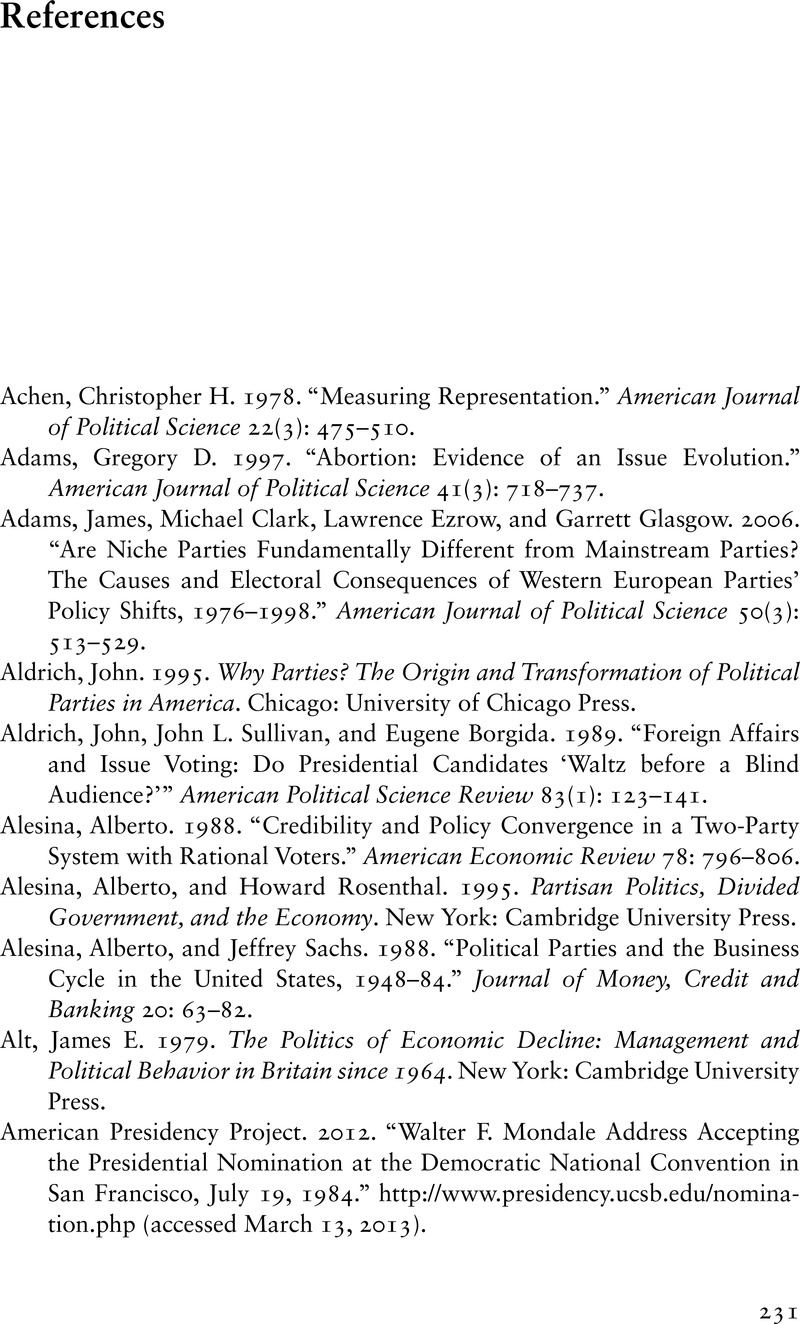References
Published online by Cambridge University Press: 05 August 2013
Summary

- Type
- Chapter
- Information
- Partisan PrioritiesHow Issue Ownership Drives and Distorts American Politics, pp. 231 - 246Publisher: Cambridge University PressPrint publication year: 2013



